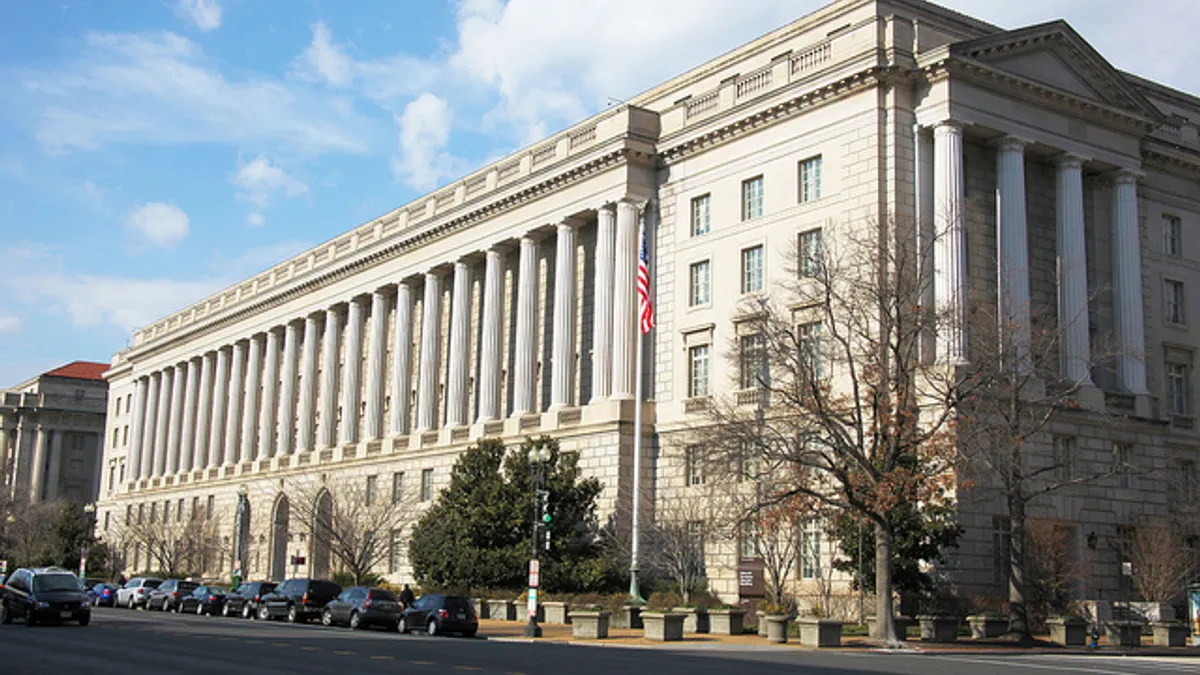Dive Brief:
- The Internal Revenue Service proposed new rules on Thursday providing guidance on monitoring practices, safety and transfering of credits regarding the 45Q tax credit, encouraging technology that removes carbon dioxide from the atmosphere.
- Many groups welcomed the proposed regulation explaining how to implement the incentive: $50/metric ton and $35/metric ton for carbon dioxide stored permanently underground and utilized to extract more oil, respectively.
- The guidance will allow stakeholders in several sectors, including electric utilities, to take advantage and proceed with plans for carbon capture implementation, according to ClearPath Executive Director Rich Powell. However, "a whole suite of policies" are needed to encourage commercialization of the technology and to lead to adoption in the utility sector, beyond the 45Q credits, Hunter Johnston, partner at Steptoe & Johnson, told Utility Dive.
Dive Insight:
While carbon capture technology is still developing, the IRS guidance comes as some utilities are crafting plans for direct air carbon capture and similar technologies. Southern Company CEO Tom Fanning announced on Wednesday that the company is planning to invest in carbon capture technology as it continues work on its net zero carbon goals.
Other groups are less optimistic about near term applications of carbon capture in utility processes.
"We can't find a business model in a carbon capture sector that produces returns," Lisa Lambert, president of National Grid Partners, told Utility Dive prior to IRS issuing its guidance.
"The business models for carbon capture companies, today anyway, just aren't attractive enough for us to invest in, to make a financial return," Lambert said. "Now we do think over time that's going to improve, as we've seen in other sectors."
While the company's corporate venture investment and innovation arm does not invest in the technology directly, its unregulated business unit, National Grid Ventures, has entered a partnership in the U.K. to explore developing a large-scale carbon capture utilization and storage (CCUS) network to be built in the mid-2020s.
The recent IRS guidance addresses how to determine safety conditions for geological storage of carbon dioxide, and for enhanced oil recovery, the process of using carbon dioxide to build pressure in an underground well and extract more oil.
Despite the tax credits for CCUS activity that developers will be able to access in the U.S., the technology remains expensive for utilities, especially if they don't have to respond to a carbon tax or other policy mechanism to drive demand for carbon capture of their fossil-fuel burning generation.
"For carbon capture to succeed across the board, and particularly in ... direct air capture and electric and industrial technologies for carbon capture, there needs to be more sponsored programs for things like front-end engineering," Johnston said.
The 45Q tax credit has been deemed by many analysts as essential to the development of carbon capture technology, but Johnston said it won't be enough for a developing technology in the utility sector. "These are all exciting technologies that are still expensive, so there needs to be more [R&D] and the tax credit itself can [better] support those technologies once they're commercial."
The Treasury Department also issued last week an extension of safe harbor deadlines for energy projects eligible for production tax credits or investment tax credits, to assist facilities under construction that are experiencing delays due to the COVID-19 pandemic.
Senate Energy and Natural Resources Ranking Member Joe Manchin, D-W.V., applauded the efforts of the Treasure and the IRS for providing "much needed assurances to CCUS, wind and solar energy project developers."
But while the safe harbor action was very timely, the 45Q guidance has been sought by stakeholder since 2018.
"These new rules free up stalled investments in important carbon capture projects," Sen. Sheldon Whitehouse, D-R.I., said in a statement, calling the IRS update "long overdue." Whitehouse was part of the bipartisan group that helped create legislative language to direct the IRS to offer carbon capture tax credits in 2018.
"I think there's now sufficient assurance that we should see a lot of projects that were sort of waiting in the wings for this decision from the IRS to come forward," ClearPath's Powell told Utility Dive.
The Treasury Department, which houses the IRS, "typically is not under formal deadlines to issue proposed regulations or other types of guidance," Judy Kwok, a tax partner with Mintz working in their energy and sustainability group, said.














